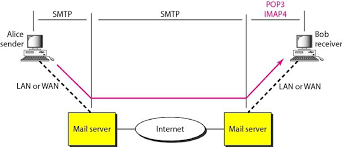
A load balancer diagram shows a network of application servers. Each server is provisioned according to its weight or power. Client requests for applications go to the most powerful application server. If you have three servers that are capable of processing applications, the two most powerful ones will be twice as powerful as their counterparts. The clients will request the same amount of data from each application server, but the requests will be routed to different servers.
Hashing algorithm
A Loadbalancing diagram shows how requests are routed via IP addresses to the right servers. The Hashing algorithm is one of the most common methods used in Load Balancing. The Hashing algorithm generates an unique requestId that uniquely identifies every client request. The result of the hashing is then used to direct the request to the desired server.
Distributed systems use hashing to evenly map requests between all servers in a group. Keeping hashing consistent across nodes minimizes the amount of work that needs to be done by the cluster every time a ring changes.
Connection multiplexing
Connection multiplexing is one of the common methods used to distribute traffic to multiple servers. The load balancer selects the correct service for a client when they request it. ADCs must keep track of the original connection and any follow-up traffic the user initiates to complete this task. This is an important task because follow-on traffic can have two problems: persistence and connection maintenance.

Multiplexing of connections in a load-balancing diagram can easily be done by subdividing the total number to the number the servers. Each server has its own IP address and port. The load balancer receives a request for particular services and will rewrite the packet to include its destination IP address.
SSL transmission
SSL passthrough can be used to configure SSL in a loadbalder. It makes it easier to manage certificates because all encryption work and decryption work is done on the loadbalancer. SSL passthrough makes sure that traffic between load balancers and backend servers is secure. However, it could expose customer data and other network instances. It is not recommended for networks with lower security.
SSL passthrough uses more CPU cycles, and has higher operating costs. This method is not suitable for deployments with high traffic. It also does not support the creation of access rules, sticky sessions, or redirects. This makes it only suitable for small-scale deployments.
Network server load balancer
A load balancer is a network device that rewrites packets to make them reach their destination. A load balancer is capable of handling different types traffic, depending upon their source IP address. Multiple servers are involved in load balancing. The first server acts as a "front-end" and receives incoming traffic and forwards it to the next server. A second server acts like a "backend", answering clients' queries.
The load balancer can be a hardware appliance or a software-based virtual device. If one server goes down, the load balancing will redirect the user's requests to the appropriate servers. It will also automatically transfer requests if another server has been added.

Kubernetes load balancer
The Kubernetes loadbalazer diagram illustrates how the two pods handle requests and responds. The problem with this approach is the inability to account for persistent connections. This means that an application must implement load balancing on client side. This issue can be solved with kube-proxy or iptables. These solutions are intended to be used in the most common deployment scenarios, and they do not consider the requirements of specific applications.
Kubernetes gives each Pod its own IP address. Each red Pod sends requests with its own IP address to the service in the above diagram. The controller will then collect the pending Services and allocate them unique IP addresses to deliver incoming packets.
FAQ
Web development is hard?
Web Development is not easy, but if you have a passion for coding, there are many online resources that can help you learn how to code.
Just find the right tools, and then go through each step.
Many tutorials are available on YouTube and other platforms. You can also download free software online like Sublime Text or Notepad++.
Books are also available in libraries and bookstores. Some of the most sought-after books are:
O'Reilly Media's Head First HTML & HTML
O'Reilly Media's "Head First PHP/Mysql 5th Edition"
Packt Publishing - "PHP programming for absolute beginners"
I hope this article was helpful.
What is a UI designer?
A user interface (UI) designer creates interfaces for software products. They are responsible to design the layout and visual elements for an application. Sometimes, the UI designer might also include graphic artists.
The UI designer should be able solve problems by understanding how people use computers.
A UI designer needs to be passionate about software and technology. He/she should be familiar with all aspects in the field, from creating ideas to implementing them into code.
They should be able create designs with various tools and techniques. They should be able solve problems creatively by thinking outside the box and come up with innovative solutions.
They should be organized and detail-oriented. They should be capable of quickly and efficiently developing prototypes.
They must be comfortable working with clients of all sizes. They must be able to adapt to various situations and environments.
They should be able to communicate effectively with others. They must be able express themselves clearly and concisely.
They should be well-rounded individuals who possess strong communication skills.
They must be motivated and driven.
They should be passionate about their craft.
What technical skills do I need to design and construct my site?
No. You only need to have a basic understanding of HTML/CSS. Tutorials that teach HTML and CSS can be easily found online.
Statistics
- It's estimated that chatbots could reduce this by 30%. Gone are the days when chatbots were mere gimmicks – now, they're becoming ever more essential to customer-facing services. (websitebuilderexpert.com)
- At this point, it's important to note that just because a web trend is current, it doesn't mean it's necessarily right for you.48% of people cite design as the most important factor of a website, (websitebuilderexpert.com)
- Did you know videos can boost organic search traffic to your website by 157%? (wix.com)
- In fact, according to Color Matters, a signature color can boost brand recognition by 80%. There's a lot of psychology behind people's perception of color, so it's important to understand how it's used with your industry. (websitebuilderexpert.com)
- It enables you to sell your music directly on your website and keep 100% of the profits. (wix.com)
External Links
How To
What is website hosting?
Website hosting refers simply to the place that people visit when they visit a website. There are two types:
-
Shared Hosting - This is your cheapest option. Your website files reside on a server owned by someone else. When customers visit your site, their requests travel over the Internet to that server. The request is then handed to the owner of that server.
-
Dedicated hosting - This is the most expensive option. Your website resides entirely on one server. Your traffic stays private as no other websites can share the same server.
Most businesses choose shared hosting because it's less expensive than dedicated hosting. With shared hosting, the company that owns the server provides the resources needed to run your website.
Both options have their pros and cons. Here are the main differences between them:
Sharing Hosting Pros
-
Lower Cost
-
Simple to Setup
-
Frequent Updates
-
It can be found at many web hosting providers
Hosting shared can be as low as $10 per month. Keep in mind, however, that bandwidth is usually included in the price. Bandwidth is how much data you can transfer to the Internet. Even if you upload only photos to your blog you might still have to pay more for large amounts of data that you transfer through your account.
You'll soon realize why your old host cost so much once you get started. Many shared hosts offer very little customer support. Although their techs may help you with setting up your site, it's not a common practice.
It is important to find a provider that provides 24-hour support. They will take care of any issues while you sleep.
Dedicated Hosting Cons:
-
More Expensive
-
Less common
-
Specific Skills Required
You're getting everything you need with dedicated hosting to operate your website. You won't have to worry about whether you're using enough bandwidth or whether you've got enough RAM (random access memory).
This means you'll have to spend more upfront. But once your online business starts, you'll realize you don't need any technical assistance. You'll soon be an expert at managing servers.
Which is better for my business?
It all depends on the type of website you are creating. If you are selling products, shared hosting may be the best option. It is easy to set-up and manage. Because you share a server, you will most likely receive frequent updates.
However, dedicated hosting is the way to go if you want to build a community around your brand. It allows you to focus on building your brand and not worrying about managing your traffic.
Bluehost.com has both. They offer unlimited monthly data transfers, 24/7 support, free domain name registration, and a 30-day money-back guarantee.